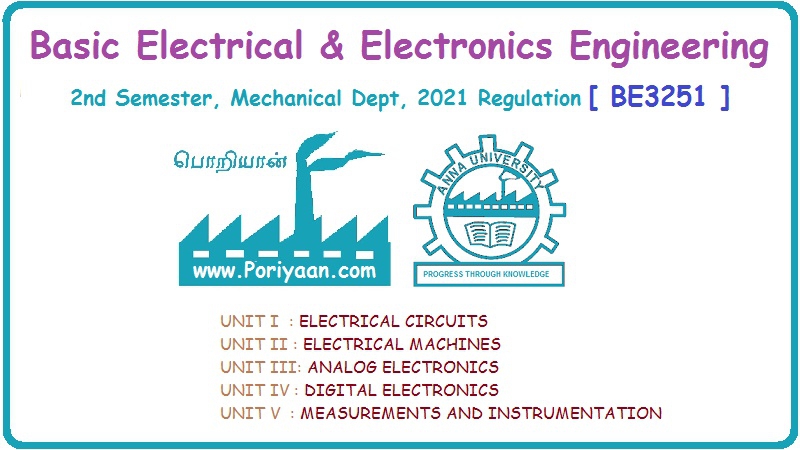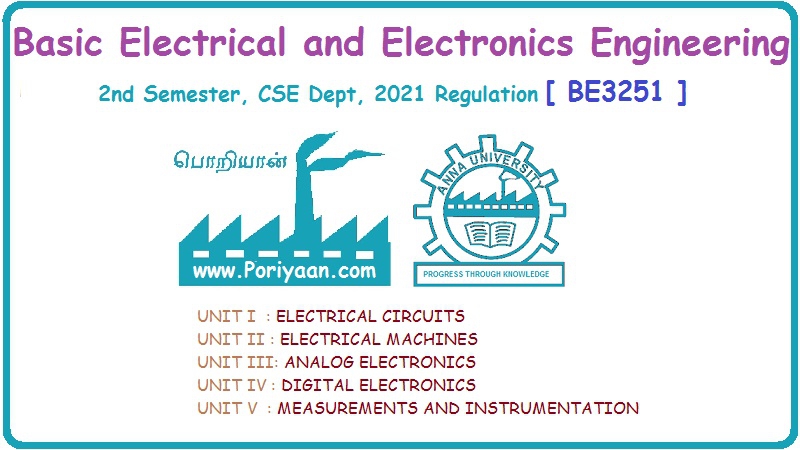Basic Electrical and Electronics Engineering: Unit II: Electrical Machines
Transformer on No-load
with Solved Example Problems
We assumed an ideal transformer, that is there were no core losses and copper loses. But practical conditions require that certain modifications be made in the forgoing theory
TRANSFORMER
ON NO-LOAD
We
assumed an ideal transformer, that is there were no core losses and copper
loses. But practical conditions require that certain modifications be made in
the forgoing theory. When an actual transformer is put on load, these is iron
loss in the core and copper loss in the windings and these losses are not
entirely negligible.
Even
when the transformer is on no-load, the primary input current is not wholly
reactive. The primary input current under no-load conditions has to supply (i)
iron losses in the core (ii) very small amount of copper loss in primary.
Hence,
the no-load primary input current I0 is not at 90° behind V, but
lags it by an angle ϕ0 <90°, no load input power.
W0
= V1 I0 cos ϕ0
where
cos ϕ0 is primary power factor under no-load condition.
From
the Figure 2.36, primary current I has two components
(i)
One in phase with V1. This is known as active (or) working (or) iron
loss component Iw.It mainly supplies the iron loss plus small
quantity of primary Cu loss.
Iw
= I0 cos ϕ0
(ii)
The other components is in quadrature with V1 and is known as
magnetising
component
Iμ.
Iμ
= I0 sin ϕ0
I0
is the vector sum of Iw and Iμ hence
I0
= (Iμ2 + Iw2)
Example: 18
A 2200/200 V transformer draws a
no-load primary current of 0.6 A and absorbs 400 watts. Find the magnetising
and iron loss currents.
Solution:
Iron-loss
current
= No-load input in watts / Primary voltages
=
400/2200 = 0182 A
Iron-loss
current = 0.182 A
I02
= Iw2+ Iµ2
Magnetising
component Iμ = √(0.62 -0.1822)
Iμ
= 0.572 A
Example: 19
A 2200/250 v transformer takes 0.5A
at a pf of 0.3 on open circuit. Find magnetising and working components of
no-load primary current.
Solution:
I0
= 0.5 A, cos ϕ0 = 0.3
Iw
= I0 cosϕ0 =⇒
0.5 × 0.3 ⇒
0.15 A
Iμ
= √0.52 - 0.152 = 0.476A
Iμ
= 0.476 A
Voltage regulation of transformer:
The
regulation is defined as change in the magnitude of the secondary terminal
voltage, when full load. That is rated load of specified power factor supplied
at rated voltage is reduced to no load, with primary voltage maintained
constant expressed as the percentage of the rated terminal voltage.
Let
E2=
secondary terminal voltage on no load.
V2
= secondary terminal voltage on given load.
Basic Electrical and Electronics Engineering: Unit II: Electrical Machines : Tag: : with Solved Example Problems - Transformer on No-load
Related Topics
Related Subjects
Basic Electrical and Electronics Engineering
BE3251 2nd semester Mechanical Dept | 2021 Regulation | 2nd Semester Mechanical Dept 2021 Regulation
Basic Electrical and Electronics Engineering
BE3251 2nd Semester CSE Dept 2021 | Regulation | 2nd Semester CSE Dept 2021 Regulation

